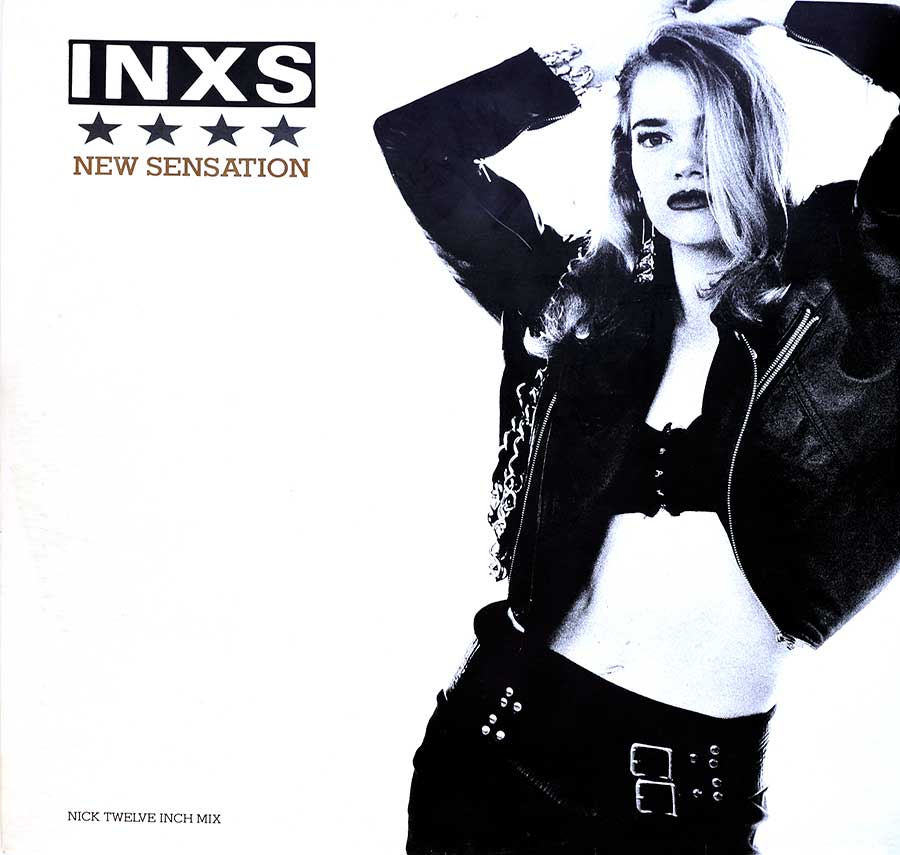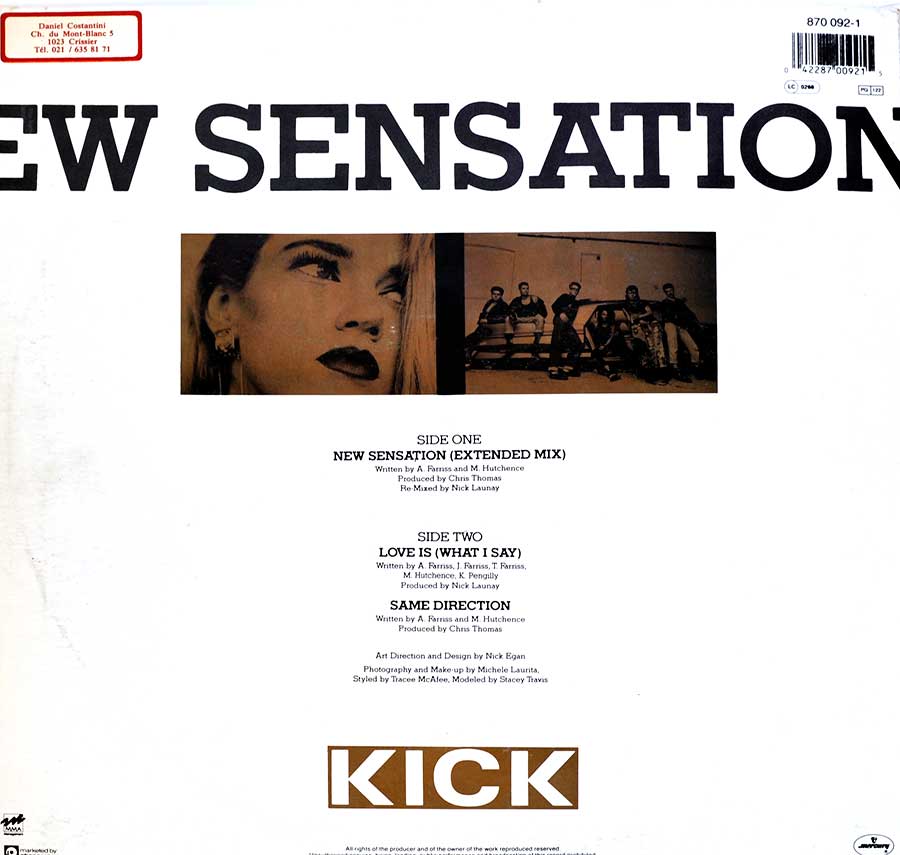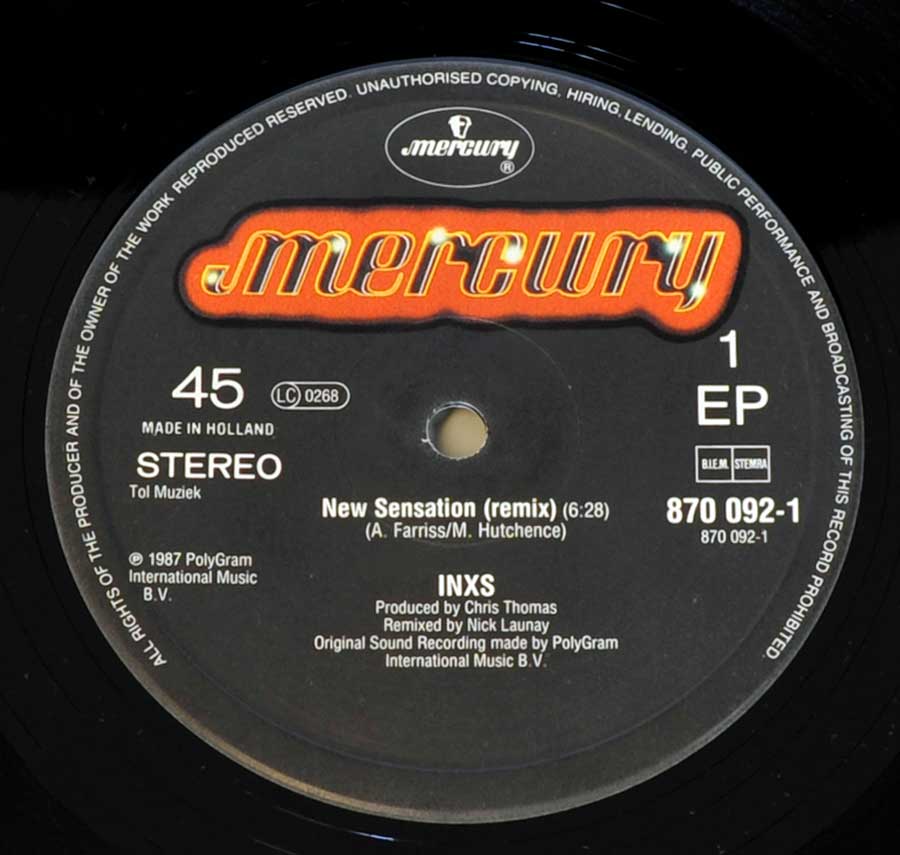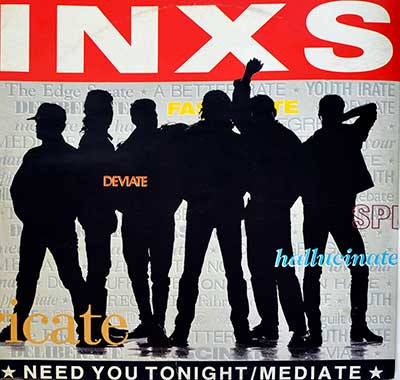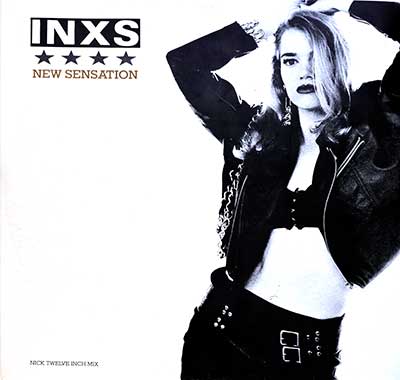INXS Ñ ÒNew SensationÓ (1987) 12" Maxi Single Album Description:
Pop with a street pulse: taut guitars in lockstep with a rubber-band bassline, a four-to-the-floor kick nudging the hips, and Michael Hutchence selling the night back to you with a conspiratorial whisper. ÒNew SensationÓ on 12-inch stretches those instinctsÑroom to breathe, room to dance, room for the sax to wink and the chorus to land like confetti at last call.
The Track: momentum as design
Andrew Farriss frames the hook with bright, clipped chords; Kirk PengillyÕs sax break arrives like neon cutting through humid air; Jon Farriss keeps the groove clipped and buoyant. The 12" format doesnÕt just extend playtime; it magnifies architectureÑbreaks are cleaner, the backbeat hits harder, and the vocal rides the pocket with just enough danger to feel like Saturday night could last forever.
Production & recording: polish with bite
Produced by Chris Thomas, whose pop instincts favor clarity without sanding off the bite, ÒNew SensationÓ was tracked between Rhinoceros Studios, Sydney, and Studio de la Grande ArmŽe, Paris, then mixed for radio punch by Bob Clearmountain at AIR in London. The result is a record that translates equally well through club stacks and car speakers, with drums tight up the middle, guitars panned for lift, and the vocal compressed to a feline glide.
Musical exploration: where rock flirts with the floor
INXS push a rock bandÕs toolkit into dance-floor logic: riffs as hooks, hooks as rhythm, rhythm as invitation. The 12" foregrounds that calculusÑedits tease the drop, percussion details flicker at the edges, and the sax solo functions like a DJÕs hands-in-the-air cue. It is not funk in the James Brown sense nor synth-pop in the English sense; itÕs an Australian hybrid tuned for global ears.
Genre context: how Australian new wave evolved
Australian new wave began by absorbing punk immediacy and pub-rock stamina, then folding in American R&B and discoÕs kinetic grammar. Bands sharpened grooves, cleaned lines, and learned the camera as an instrument. By the late Õ80s, acts like INXS converted that lineage into export-ready dance-rock: lean songwriting, tactile rhythms, and a frontman who could seduce the lens while keeping a bandÕs swing intact.
Reception & controversies
With success came friction. Purists complained the bandÕs sleek sheen was too cosmopolitan; some British press sniffed at the commercial polish; and the celebratory hedonism in the lyric drew the usual finger-wags. Yet those critiques accidentally underscored the recordÕs aim: to make smart, muscular pop that moves first and argues later.
Australia at the turn of the decade: the broader frame
End-of-Õ80s Australia was newly confidentÑpost-pub-rock, post-ÒOz rockÓ caricatureÑexporting films, fashion, and bands with global swagger. The dollar was volatile, the live circuit was maturing, and video-era ambition meant local acts wrote with international stages in mind. ÒNew SensationÓ fits that historical mood: a cosmopolitan postcard from Sydney to the world, stamped with groove and lit by city lights.
